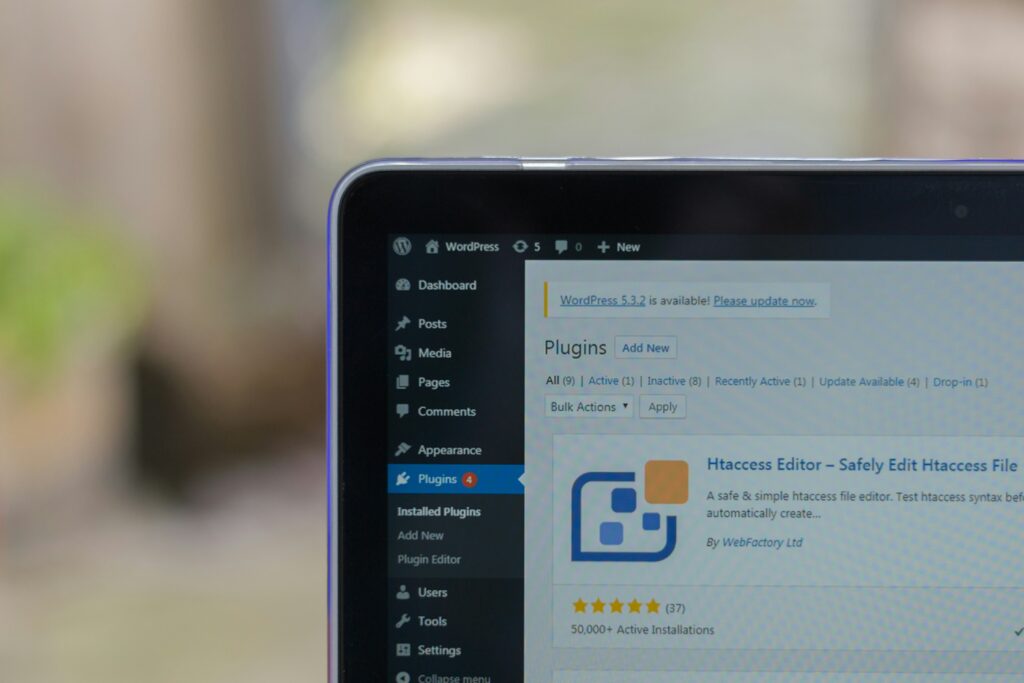
So, you’ve decided to embark on the exciting journey of creating your own WordPress site. But where do you begin? Don’t worry, because in this article, we’ll walk you through a step-by-step guide to installing and setting up your WordPress site. Whether you’re a complete beginner or have some experience with website building, we’ve got you covered. By the end of this article, you’ll have your very own WordPress site up and running, ready for you to unleash your creativity and share your ideas with the world. Let’s get started!
Affiliate Marketing Academy – Get it here
Step 1: Choose a Hosting Provider
When it comes to creating a WordPress site, choosing the right hosting provider is crucial. There are many hosting providers available, each offering different features, pricing plans, and customer support. Take the time to research and compare different hosting providers to find the one that best suits your needs and budget.
Start by considering your website needs. Do you anticipate high traffic? Will you need a lot of storage space for media files? These factors will help you determine the type of hosting plan you require. Additionally, think about your budget and how much you’re willing to invest in hosting services.
Once you have a clear understanding of your website needs and budget, compare the features and customer reviews of different hosting providers. Look for providers that offer reliable uptime, fast loading speeds, and excellent customer support. Reading reviews can give you insights into the experiences of other users and help you make an informed decision.
Step 2: Register a Domain Name
Before you can launch your WordPress site, you’ll need to register a domain name. Your domain name is your website’s address on the internet, so it’s important to choose a memorable and relevant name that represents your brand or website content.
Start by brainstorming potential domain names that align with your website’s purpose. Consider including keywords related to your niche to improve search engine optimization (SEO). Once you have a few options in mind, check the availability of your desired domain name using a domain registrar or hosting provider.
When choosing a domain registrar, opt for a reputable and reliable one. This ensures that you have full control over your domain and protects you from potential issues in the future. Registering your domain is often a simple process that can be completed online through the registrar’s website.

Affiliate Marketing Academy – Check it out
Step 3: Set up Hosting Account
After choosing a hosting provider and registering your domain name, it’s time to set up your hosting account. This involves creating an account with your chosen hosting provider and selecting a hosting plan that suits your needs.
To create an account, visit the hosting provider’s website and look for the “Sign Up” or “Create an Account” button. Fill out the required personal information, such as your name, email address, and password. Some hosting providers may also require payment information for billing purposes.
When choosing a hosting plan, consider the resources and features you’ll need for your WordPress site. Options typically include shared hosting, dedicated hosting, and virtual private servers (VPS). Shared hosting is suitable for smaller websites with lower traffic, while dedicated hosting and VPS options offer more resources for larger sites.
Step 4: Install WordPress
With your hosting account set up, it’s time to install WordPress. Most hosting providers offer a simple, one-click installation process that makes setting up WordPress quick and easy.
Begin by accessing your hosting account’s control panel, which is usually accessed through a URL provided by your hosting provider. The most common control panel is cPanel. Once logged in, locate the section labeled “WordPress” or “Auto Installers.”
Click on the WordPress installation option and follow the prompts provided by your hosting provider. This typically involves selecting the domain you want to install WordPress on and choosing a username and password for your WordPress dashboard. After completing the installation process, you’ll receive a confirmation that WordPress has been successfully installed.

Step 5: Configure WordPress Settings
After installing WordPress, it’s important to configure its settings to optimize your website’s functionality and appearance. To do this, log in to your WordPress dashboard using the URL provided during the installation process.
Once logged in, navigate to the “Settings” section in the sidebar and click on “General.” Here, you can set your site title, tagline, and language. Make sure to choose a site title and tagline that accurately represent your website and optimize them for search engines.
Next, go to the “Settings” section again and click on “Permalinks.” Adjust the permalink structure to create SEO-friendly URLs for your website’s pages and posts. Choose a structure that includes the post name, as this is generally the most user-friendly and SEO-friendly option.
Step 6: Choose and Install a WordPress Theme
Now that you’ve configured the basic settings of your WordPress site, it’s time to choose a theme. The theme will determine the overall design and layout of your website, so it’s important to select one that aligns with your website’s purpose, design preferences, and functionality requirements.
WordPress offers a wide range of free and premium themes in its official theme directory. Explore different themes and consider factors such as responsiveness, customization options, and user reviews. Take your time to find a theme that not only looks great but also provides the features you need to enhance your website’s user experience.
Once you’ve chosen a theme, it’s time to install and activate it. From your WordPress dashboard, go to the “Appearance” section and click on “Themes.” Here, you can upload the theme file if you’ve purchased a premium theme, or search for a free theme from the WordPress theme directory. After installation, activate the theme to apply it to your website.

Step 7: Install Essential Plugins
To extend the functionality of your WordPress site, you’ll need to install plugins. Plugins are small pieces of software that add specific features and functionality to your website. There are thousands of plugins available in the WordPress Plugin Directory, catering to various needs and requirements.
Identify the necessary plugins based on your website’s functionality requirements. For example, if you have an online store, you’ll need to install an e-commerce plugin. To enhance site security, consider installing a security plugin. Search for the desired plugins from your WordPress dashboard by going to the “Plugins” section and clicking “Add New.”
Once you’ve found the desired plugins, install and activate them. Some plugins may require additional configuration, so make sure to follow the provided instructions or consult plugin documentation. Remember that using too many plugins can slow down your site, so choose wisely and only install the ones you truly need.
Step 8: Customize Your Site’s Appearance
Now that you have your WordPress theme and essential plugins in place, it’s time to customize your site’s appearance. WordPress provides a built-in feature called the Customizer, which allows you to modify various aspects of your site’s design without any coding knowledge.
To access the Customizer, go to the “Appearance” section in your WordPress dashboard and click on “Customize.” From here, you can modify site colors, fonts, header and footer design, and other visual elements. Some themes may offer additional customization options specific to their design.
Make your website visually appealing by uploading a custom logo and background image if desired. These elements can help strengthen your brand identity and make your website stand out. Experiment with different customization options until you are satisfied with the overall look and feel of your site.
Step 9: Create Essential Pages
To provide essential information and improve user experience, it’s important to create specific pages on your website. Consider including pages like “About Us,” “Contact,” and “Privacy Policy” to establish trust with your audience and comply with legal requirements.
Begin by adding these pages from your WordPress dashboard. In the sidebar, click on “Pages” and then “Add New.” Give each page a unique title and write engaging and informative content for each. Use the provided text editor to format your content and add relevant images or videos to enhance the page’s visual appeal.
Organize your pages by creating a menu for easy navigation. In the “Appearance” section of your dashboard, click on “Menus.” Add the desired pages to the menu and arrange them in the desired order. Save the menu, and it will now appear on your website, allowing visitors to easily navigate to important pages.
Step 10: Install Security and Backup Solutions
To protect your WordPress site from potential threats and ensure its data is safe, it’s important to install security and backup solutions. This helps prevent unauthorized access, malware attacks, and data loss.
Start by installing a security plugin from the WordPress Plugin Directory. Popular security plugins include Wordfence Security and Sucuri Security. Once installed, follow the instructions provided by the plugin to set up security features such as firewall protection, malware scanning, and login security.
In addition to security measures, regular backups are essential for safeguarding your website’s data. WordPress offers several backup plugins that automate the backup process and allow you to store backups both locally and in the cloud. Install a backup plugin of your choice and configure it to make regular backups based on your preferences.
Remember to regularly update your WordPress site, theme, and plugins to ensure you have the latest security patches and features. This can help protect your site from vulnerabilities and keep it running smoothly.
By following these ten steps, you’ll be able to successfully install and set up your WordPress site. Remember to take your time, explore options, and make informed decisions at each stage. With a well-designed and functional website, you’ll be ready to share your content with the world!